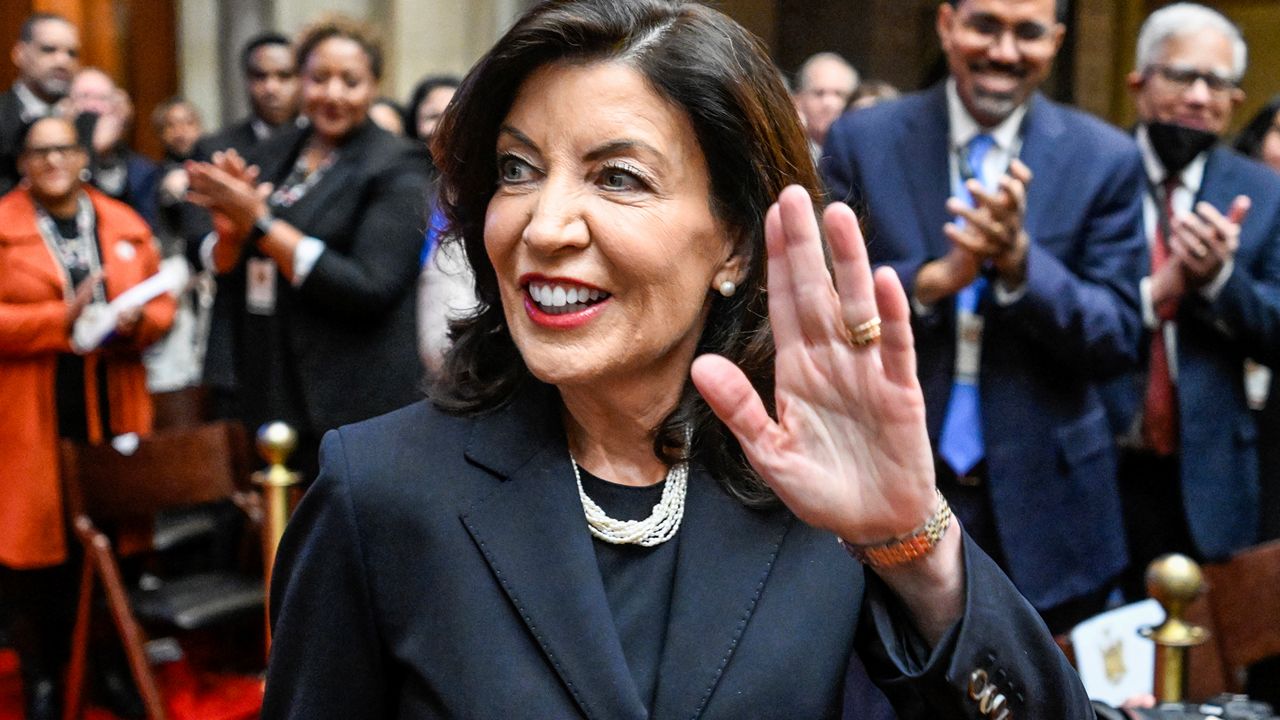At noon on Wednesday, Gov. Kathy Hochul will formally start a two-month process that will decide how New York will spend more than $200 billion in taxpayer money over the next year.
How this process shakes out will determine how schools, health care, child care, support for the most vulnerable people and law enforcement is paid for and how much.
Here are six things to watch for in Hochul's budget address.
1. School spending.
New York schools have benefited from an infusion of aid over the last several years, with Hochul reaching an agreement to hit a targeted spending goal that supercharged direct aid to education. The first batch of money was approved last year; a second jolt in spending of billions of dollars in additional aid to schools is expected to be proposed this year.
The spending has kept progressive education advocates happy, and it has allowed school districts to enjoy some budget breathing room of their own, avoding major property tax increases along the way.
Typically, education spending can be a messy, heated debate in the state budget. For now, thanks to additional revenue from the federal government and tax hikes on the richest New Yorkers, that has subsided.
The peace could end, however, should Hochul make a push to expand charter schools in New York, a move that is opposed by the state's politically potent teachers' unions.
2. Health care.
Hospital networks are struggling. Health care networks, including long-term care facilities like nursing homes, have had their finances stressed by the pandemic and a staffing shortage that has also overlapped with labor unrest from nurses' unions.
Hochul has vowed to greatly expand the health care workforce by 20% in the next five years, offering incentives to boost nursing programs.
But hospital and health care organizations over the last several weeks have said help is needed now, either through a boost in Medicaid rates or aid that could help them offset the higher cost of visiting nurses who have been used in order to fill gaps in staffing coverage.
3. Taxes.
So far, Hochul has only indicated she plans to raise cigarette taxes by $1 per pack. But broad-based tax hikes on the personal income tax, the main driver of New York's revenue, won't be proposed in the governor's budget plan.
This is to the dismay of progressive advocacy organizations who have called for another increase in the personal income tax rate on wealthy people, a handful of whom provide much of New York's revenue. A debate over raising rates could become the marquee issue in the budget negotiations over the next two months.
Federal aid shuttled to New York due to the pandemic has dried up. New York is not expected to be running a deficit in spending, but revenue in the coming years is projected to be a lot more fragile.
An uncertain economy and a looming recession could fuel both sides of the tax debate.
4. Going big on bail.
Hochul wants to end the "least restrictive" requirement when bail is set for serious, bail-eligible criminal charges. The move is meant to clear up confusion for judges when determining whether a person should be released. On its face, this doesn't seem like a financial issue for the state budget.
But governors in New York have a tremendous amount of power over the terms of the spending plan, and can insert non-budgetary policy into the document. It's expected Hochul will include the changes to the controversial bail law this year in her budget plan, giving her leverage, potentially, over her fellow Democrats in the Legislature who are likely to clash with her over the issue.
A hearing this week on crime statistics drew no obvious conclusions on whether the bail law, which ended cash bail requirements for many criminal charges, was leading to more crime or whether broader societal forces were at play.
Aside from bail, Hochul has already announced plans to greatly increase spending to implement discovery law changes for local district attorneys from $12 million to $52 million. The goal is to help them expand resources -- from staff to technology -- in order to process evidence faster and more efficiently under the law's requirements.
5. Support for New York City's migrants.
Straining New York City's own finances has been caring for newly arrived migrants in the last year. Old hotels have been used to provide housing, though a more medium- to long-term solution has been elusive and potentially cost prohibitive for the city.
Mayor Eric Adams and Hochul have sought to show how well they are working together on issues like combating subway crime. Funding to help the city with its growing migrant population could be a sticking point, however, if Hochul expects the city to instead seek federal help.
6. Housing and climate.
How much muscle does Hochul want to put behind her plan to expand 800,000 units of housing in New York? The governor has made a housing push a key priority for her this year amid rising rents and unaffordable properties locking out vast swaths of the middle class in New York.
She has called for a provision that would enable housing projects to move forward even if they conflict with local zoning requirements. Hochul last year unsuccessfully sought to make it easier to build accessory dwelling units, but dropped the plan amid opposition from Long Island officials.
And on the left, lawmakers and advocates will likely push for measures meant to make it harder for landlords to raise rents and evict tenants.
Meanwhile, Hochul must also contend with efforts to transition New York to more renewable forms of energy in the coming years. Environmental organizations may also push for much, if not all, of the new housing to be part of reaching those goals.



